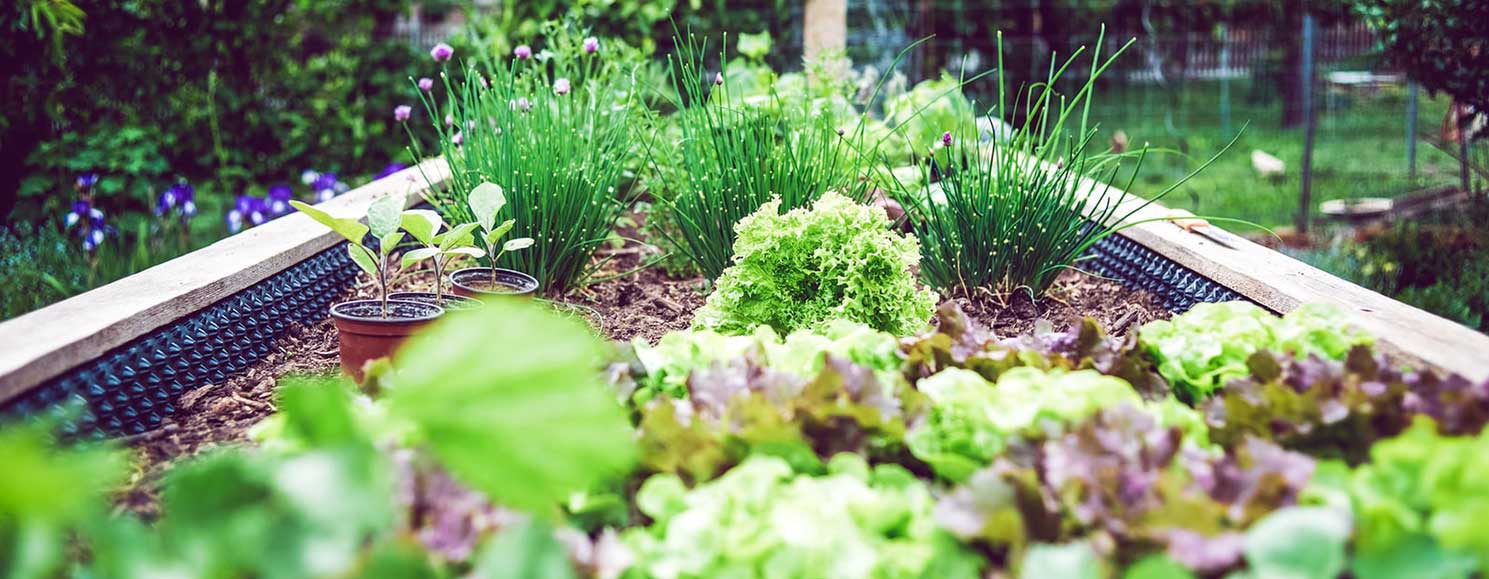Life Insurance
Lump sum payment if you were to pass away or are diagnosed with a terminal illness.
AIA Vitality NZ - 6 min read
20 November 2020
Growing your own produce is cheap, easy, and great for the environment. Here’s how to harvest a bumper crop from your own backyard (even if you’ve got no garden at all!).

Cultivating a vegetable (or herb!) garden is great on many levels. It’s cost effective, you’re eating something you’ve grown yourself, and it’s a great way to reconnect with nature. Plus, you’ll feel pretty chuffed when you pull that first perfect (or wonky) carrot out of the ground, or pluck a perfect sprig of mint from a pot.
And you don’t need to have a massive backyard to get involved – a container on a balcony, pots along the windowsill, even a few carefully-placed hanging baskets are all you need to grow fresh herbs and vegetables at home.
While the main benefit of home-grown produce is the convenience of herbs and veggies literally at your fingertips, there are a few other advantages worth noting.
When you’re eating your own home-grown veggies, you’re eating seasonally. For centuries, Chinese medicine has recommended we eat with the seasons, and that doing so will create balance within our bodies, boost energy and provide clarity. This University of Aberdeen study agrees.
Growing your own produce is good for the environment too. Even if your crop’s on the small side, you’re relying less on purchasing food from the supermarket, which usually comes with food miles built into the price. Food miles – the distance produce has travelled to get from the farm to your plate – generally factor in a pretty high carbon footprint too, due to the fossil fuels required to transport your food.
Starting your own little veggie patch is cost effective. No more wilted herbs at the bottom of the vegetable crisper; when you’re growing your own thyme or parsley, and can snip off what you need rather than splashing out on a pricey bunch from the supermarket.
Gardening is a great exercise in mindfulness, no matter what size space you’re working in. You’re in the sun, breathing fresh air, you’re getting your hands dirty (although please make sure you’re wearing gardening gloves!), and you’re engaged in a truly organic process. Studies have shown that regular exposure to plants and gardens may be beneficial to both our physical and mental health.
Whether you’re working with an acre block (lucky you!), a balcony, or seemingly no space at all, it’s surprisingly simple to go green.
Here’s how to get started.
Ideally, you want to start your garden in a spot that gets at least a few hours of morning sun. If you’re starting your garden indoors (in pots and baskets), choose somewhere that gets lots of natural light.
Whether you’re working in the ground or in pots, you want to make sure your soil is in top-notch condition. Pick up a few bags of organic potting mix and work it through your existing soil, or pop directly into your pots. When you’re handling soil, potting mix and compost, make sure you’re wearing gardening gloves.
If you’ve got limited space, work with pots and containers. Fill a few containers with soil and place in a sunny spot in your courtyard or on your balcony. No garden at all? Try hanging baskets in the sun, or deep, narrow boxes on your windowsill. Lettuce, spinach, radish, carrots and most herbs will grow wonderfully in a window box, while strawberries, cherry tomatoes and peas do well in hanging baskets.
If you haven’t spent much time in the garden, start with plants that are easy to grow. Herbs like parsley, mint and rosemary are great if you don’t have much space (and flourish in pots), while salad leaves, beans, tomatoes and kale are excellent if you’ve got a bit more room to grow.
Whether you plant seeds or seedlings depends on what you want to grow. Some veggies, like carrots, beetroot and beans, are easy to grow when you direct-seed, whereas crops like salad leaves and tomatoes do well planted from seedling. Chat to your local plant seller for advice on what will work best for your garden.
When you’ve got your new plants in the ground, they’ll need plenty of TLC. And by TLC, we mean water. Give them a good soak every day for the first three weeks after you’ve planted seedlings, and a quick water twice daily for seeds (drop back to once a day when they sprout).
When your garden is flourishing and tomatoes are red, zucchinis a good size, and herbs looking leafy, make sure you pick them, cook them, and eat them! If you leave things on the plant too long, you risk woody veggies or pests getting in there first.
Here’s one of our favourite recipes featuring easy-to-grow backyard produce. You can grow almost everything yourself!
Disclaimer:
The information in this article is general information only and is not intended as financial, medical, health, nutritional, tax or other advice. It does not take into account any individual’s personal situation or needs. You should consider obtaining professional advice from a financial adviser and/or tax specialist, or medical or health practitioner, in relation to your own circumstances and before acting on this information.